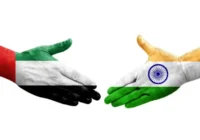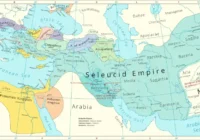Water wars in South Asia are unlikely due to well-etched treaties and economic compulsions.
If there is ever to be a Third World War, many believe it will be fought over water, with South Asia serving as the flashpoint. The region houses a quarter of the world’s population and has less than 5% of the global annual renewable water resources. Low water availability per person and high frequency of extreme weather events, including severe droughts, further increase the vulnerability of the area.
In this region, India, Pakistan, Bangladesh, Nepal and Bhutan depend on rivers originating in and passing through foreign territory. China holds an advantageous position, as two of South Asia’s most expansive river systems (the Brahmaputra and the Indus) originate from the glaciers in Chinese-controlled Tibetan plateau. However, for all these countries, more is turning out to be less thanks to the increased water usage, coupled with the expansion of agriculture, industry and the energy sector.
Estimates suggest that India, Pakistan, Bangladesh and North China collectively use 380-400 km3 of groundwater per year—approximately half of the world’s annual groundwater withdrawals. This has resulted in issues related to water quality, adding to the scarcity.
Any disturbance by the country upstream is likely to impact life downstream. Also, as heightened interests to tame and exploit a river through dams, canals and hydel projects suggest, this region will be a zone of constant confrontations in the future.
As perilous as the situation may seem, the idea of a “water war” seems far-fetched for several reasons. The modern era has seen a drop in the frequency of major wars between nations due to nuclear weapons, but also thanks to the realization that war impedes progress. South Asia has not seen a full-blown war since 1971, even though there have been provocative border disputes between India, Pakistan and China. The Kargil conflict of 1999 did not escalate into a war due to international pressure and nuclear weapons acting as deterrents. Other reasons directly related to water conflict include policies, treaties and agreements.
India in the Middle
The westward flowing Indus and Satluj rivers start in Tibet and pass through India and Pakistan, while the Brahmaputra traverses through China, India and Bangladesh, aided by a couple of tributaries from Bhutan as well. India also shares several smaller rivers with Nepal and four other rivers with Pakistan.
All of South Asia’s trans-boundary rivers nourish India’s lands on their forward journey to other countries, thus making it a significant player in all possible disputes. India is home to about 17% of the world’s population, but the country has less than 4% of its water resources. About one-third of its surface water is dependent on foreign-originating rivers.
India has been a firm believer in negotiations both inside and outside the country. Given the level of diversity and regional interests it has to pacify within its borders, the fact it has been able to avoid an overt civil war is because of its tendency to engage opponents for long periods of time. Even outside its borders, relations with Pakistan have gone through tough phases, including full-blown wars, but negotiations have always been given paramount importance.
In fact, through the wars they have fought, the archrivals have successfully honored the Indus Water Treaty governing rights over the shared rivers. India has also actively engaged Bangladesh, Bhutan and Nepal to settle disputes around rivers from time to time. China is the only country with which India has no agreement, except the one that improved sharing of data regarding river flow level during flood season.
The Brahmaputra Tangle
China is considered the 13th most “water-poor” country in the world, with 80% of its cities severely water stressed. Its parched northern region possesses only 14.5% of the entire country’s water resources, which is why it is planning to divert water from Brahmaputra (known as Yarlung Tsangpo in Tibet) to its northern areas. China is also developing five hydropower projects on the river, the first of which was completed in 2014. The lack of knowledge-sharing on these projects by the Chinese has caused anxiety among downstream countries.
Of the three countries dependent on the Brahmaputra, Bangladesh is the most vulnerable, having the lowest water resources and maximum external dependency.
China refuses to enter formal water-sharing agreements, which is the only way out of the “water mess.” The only agreements India has been able to get China into have been on sharing water-related data during the floods, the most recent of which was signed in 2013 during then-Indian Prime Minister Manmohan Singh’s visit to China.
The most relevant international law on trans-boundary water-sharing is the United Nations Convention on the Law of Non-Navigational Uses of International Watercourses, which was signed in 1997. While China voted against it, India abstained, pushing them out of the purview of the convention. The situation will get trickier as time passes, since water demands will rise and more dams will be constructed. This is why it is geopolitically imperative for India and Bangladesh to bring China to the negotiation table as soon as possible.
If there is ever to be a Third World War, many believe it will be fought over water, with South Asia serving as the flashpoint. The region houses a quarter of the world’s population and has less than 5% of the global annual renewable water resources.
In fact, Bangladesh has been successful in engaging India, its upstream neighbor, despite being a comparatively smaller and militarily weaker nation with little bargaining power. Proximity between the two countries geographically, as well as historically, influenced these decisions. India’s need to maintain a strong alliance with Bangladesh, particularly at the regional level, also affects these negotiations. In contrast, Sino-Indian relations are not all that cordial, thanks to long-running border disputes and regional groupings.
Water Wars Between India and China?
India and China are much too dependent on each other today, both economically and in the context of global politics—preventing such a conflict over water. China has become India’s largest trading partner, with bilateral trade having a potential of over $100 billion in 2015.
The impact of damming too may not be as disastrous as is currently being predicted. Most of the dams planned by China are run-of-the-river, requiring smaller water storage to produce electricity. There will definitely be a fluctuation in water flows downstream, impacting the aquatic life more than the people. Thus far, nations have not gone to war for any living beings other than humans.
Moreover, the Brahmaputra gets most of its water from various tributaries after entering India, thanks to heavy rainfall in the northeastern region. In an interview, Jabin T. Jacob, assistant director and fellow at the Institute of Chinese Studies, said about 70% of the water volume of the Brahmaputra is generated on the Indian side of the McMahon Line through various tributaries and rainfall. The 30% natural flow from Tibet is still a high volume that is expected to first increase and then decline in the long-term due to the melting of the Jima Yangzong glacier, the Brahmaputra’s main source.
On the other hand, the plan to divert water from the Tibetan plateau toward North China faces technical challenges as it has to be hauled up several thousand meters, which does not seem feasible as of now. Thus, the river flow is not expected to change as drastically as predicted.
In case of scarcity, India is more likely to strengthen its domestic rainwater recharge capacities than sabotage dams operating across its borders, potentially provoking China into war. India gets 4,000 billion m3 of sweet water through annual precipitation—of which only 18% is used effectively. Thankfully, the country has realized the need to conserve water, which is why there is a renewed focus on surface water storage and catchment treatment, particularly through large initiatives, including a rural job guarantee scheme and the Integrated Watershed Management Program. This does not mean water conflicts will not happen. While a water war may not occur, water can be used as an effective weapon by upstream countries, especially in the absence of an agreement, should war break out.
The Indus success
The Indus Water Treaty between India and Pakistan is one of the most successful water sharing agreements in the world, even surviving multiple wars between the two countries. All rivers flowing into Pakistan go through India. When Pakistan was created in 1947, it was decided that India would release sufficient water and get paid by Islamabad accordingly. The newly created country feared that India could reduce river flows, resulting in droughts downstream. With the intervention of the World Bank, the neighbors eventually sealed the treaty that gave exclusive rights to the Ravi, Beas and Sutlej to India before they entered Pakistan. In return, Pakistan received exclusive usage rights to the western rivers Jhelum, Chenab and Indus, but with some stipulations for development of projects on these rivers in India.
The treaty also envisaged a commission to decide future disputes and resolve conflicts through inspections and data sharing. The treaty was put to the test to resolve the Baglihar and Kishanganga hydropower projects on the Indian side. Pakistan objected, claiming that India violated the treaty; however, arbitrators allowed the projects with some modifications.
The media and opposition parties in Pakistan continue to blame India for disrupting river flows, causing floods as well water shortages in the country. Fortunately, state authorities have been mature enough to avoid such blame games, as was evident in recent incidents when Pakistani media blamed India for water shortage in the country.
54 Rivers, 1 Treaty, Still Peaceful
Bangladesh and India share the maximum number of rivers (54) between any two countries in the region, but only one comprehensive treaty was signed in 1996 that divides the Ganges’ waters almost equally. India was instrumental in the formation of Bangladesh, and soon after the country gained sovereignty, an Indo-Bangladesh Joint River Commission for water management was established in 1972.
However, it is the Teesta River—originating in Sikkim and flowing through West Bengal before entering Bangladesh—that is a point of contention between the two countries. In 1983, an ad-hoc water-sharing agreement was reached between India and Bangladesh, under which they received 39% and 36% of the water flow respectively.
Speculation was rife of a new agreement on water-sharing as Indian Prime Minister Narendra Modi visited Bangladesh in June 2015—but nothing came out of it. During his September 2011 visit, domestic political complications stopped then-Prime Minister Singh from signing an agreement.
India’s plan to tame the Brahmaputra through several small and big dams in Arunachal Pradesh also seems to fair well with Bangladesh. While Dhaka has raised concerns about China’s plans, it does cooperate with the dams being planned in Arunachal Pradesh. Meanwhile, the opposition comes from within India, as the downstream state of Assam is concerned about the adverse impacts of these dams.
It is no wonder that water has become a topic of intense confrontation among various regimes, but efforts are also being made regularly to share resources and information that diffuse tensions. As long as these mechanisms stand and are strengthened, a water war will be kept at bay.
The views expressed in this article are the author’s own and do not necessarily reflect Fair Observer’s editorial policy.
Photo Credit: Holbox / Shutterstock.com / Narendra Modi / Flickr
 We bring you perspectives from around the world. Help us to inform and educate. Your donation is tax-deductible. Join over 400 people to become a donor or you could choose to be a sponsor.
We bring you perspectives from around the world. Help us to inform and educate. Your donation is tax-deductible. Join over 400 people to become a donor or you could choose to be a sponsor.
Support Fair Observer
We rely on your support for our independence, diversity and quality.
For more than 10 years, Fair Observer has been free, fair and independent. No billionaire owns us, no advertisers control us. We are a reader-supported nonprofit. Unlike many other publications, we keep our content free for readers regardless of where they live or whether they can afford to pay. We have no paywalls and no ads.
In the post-truth era of fake news, echo chambers and filter bubbles, we publish a plurality of perspectives from around the world. Anyone can publish with us, but everyone goes through a rigorous editorial process. So, you get fact-checked, well-reasoned content instead of noise.
We publish 2,500+ voices from 90+ countries. We also conduct education and training programs
on subjects ranging from digital media and journalism to writing and critical thinking. This
doesn’t come cheap. Servers, editors, trainers and web developers cost
money.
Please consider supporting us on a regular basis as a recurring donor or a
sustaining member.
Will you support FO’s journalism?
We rely on your support for our independence, diversity and quality.







